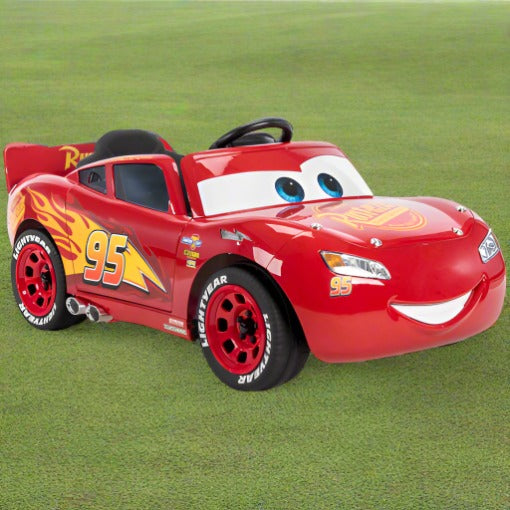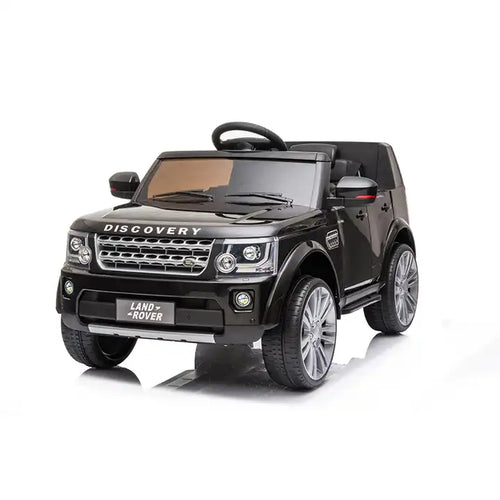New Ideas On Picking Remote Control Childrens Cars
Wiki Article
What Are The Most Important Safety Features I Should Consider When Buying An Automobile For A Ride? The Pros And Pros And
It is essential to take into consideration safety features when choosing a ride with your children. These features will help keep them safe and entertained while playing. Below are some safety features you need to think about.
Pros - Seatbelts keep your child inside the ride-on vehicle, reducing chance of them falling out or being ejected when playing. Seat belts provide an extra layer of safety particularly when taking abrupt turns or stopping abruptly.
Cons - Certain vehicles for ride-ons, especially those for younger toddlers, may not include seat belts. Also, some children find seat belts uncomfortable and restrictive. This can lead to resistance to using them.
Sturdy Construction
Pros: A sturdy ride-on vehicle with high-quality materials will last longer and be less likely to break. This will ensure safety and reliability. It is able to withstand the demands of playing and offer stability during use.
Cons - Strong construction tends to be more costly that makes it prohibitive for certain families. Furthermore, heavier materials may impact the maneuverability and mobility.
Low Center Gravity -
Pros- Ride-ons with an elongated center of gravity will be less likely to tip, thus reducing the risk of accidents. They are more steady and stable, particularly when turning or performing maneuvers.
Pros - Some ride-on vehicles that have a low center of gravity may sacrifice ground clearance or off-road capabilities, limiting their versatility in certain situations.
Remote control for parents -
Pros: Remote-controlled ride-on cars allow parents to supervise and supervise their child's activities. They offer an additional degree of security as well as parental supervision. Parents can intervene if emergencies arise, steer difficult terrain or prevent collisions.
Cons - Remote parental control can hinder a child's independence, independence and freedom of play since they'll be relying on the direction and assistance of their parents when they play. In addition, remote-controlled vehicles can be more costly than traditional ride-on cars that require manual operation.
Speed Limiters
Pros - Ride on vehicles with adjustable speeds or speed limiters permit parents to choose the speed that is appropriate for the car. This lowers the likelihood of accidents or collisions. They may increase the speed slowly as a child gains confidence and develops abilities.
Cons - Some children outgrow lower speed settings and this can cause frustration and dissatisfaction. Additionally, certain models might not have speed limiters, or require additional features or accessories.
Safe Start Technology -
Safe start technology decreases the risk of lurches or sudden jerks which could startle or cause a child to fall. It gives a more relaxed and safer riding experience.
Cons - Models that include the safety start feature could cost more than models without. Furthermore, children might find the gradual acceleration and deceleration less interesting or enjoyable than immediate starts and stops.
Visibility Enhancements
Pros- Ride-on-cars with visibility enhancements including functioning headlights (or taillights) reflective material or other features increase visibility. This is helpful in dim or low-light areas. They enhance security by making the car more noticeable to pedestrians or vehicles.
Cons - The greater visibility can result in the battery draining more quickly, or to increase the level of complexity. This could increase the risk of problems or maintenance.
You can ensure your child's security by weighing the advantages and disadvantages of these options. Check out the most popular JCB ride on toys for website advice including electric ride on cars, race car toy car, two seater childrens electric cars, car electric ride on, car for toy, childrens electric ride on, remote control childrens car, 2 seater electric cars, electric ride along car, ride a toy and more. .

What Kind Of Assembly And Maintenance Is Required For The Kid's Car Ride-On?
It is normal for children' ride-on car to require some assembly, along with regular maintenance in order to ensure optimal performance and safety. Here are the most common maintenance and assembly requirements for kid's ride-on cars - Assembly -
Most cars that ride on are partially assembled at the time of arrival and require some assembly. Connecting steering wheels, wheels seats, and other components as according to the directions given by the manufacturer is generally required.
Follow the steps to assembly in order to ensure that all parts are properly attached and aligned. Utilize the tools and hardware that are provided to complete the task.
Cleaning -
To ensure that the car you ride in to look the most attractive and function properly, regular cleaning is required. Wipe down the exterior surfaces using the help of a soft, damp sponge or cloth dipped in mild soapy water. This will remove dirt, dust and other particles.
Pay particular attention to areas that are susceptible to accumulation such as undercarriage, tires, and wheels. Use a brush or a tooth brush to scrub areas that are difficult to reach and eliminate the stubborn dirt.
Avoid using harsh chemicals and abrasive detergents. They can harm electronic parts or the paint of the ride-on car.
Battery Care
If the vehicle that you ride on is powered by a rechargeable battery, the proper care of batteries is vital to maintain performance and prolong battery life. These guidelines can aid you in maintaining your battery.
It is essential to charge the battery completely prior to the first use and every time you utilize it to ensure the longest running time.
Avoid charging batteries excessively or leaving them hooked up to chargers for prolonged periods. This could damage batteries and shorten their life.
Keep the ride-on vehicle and battery in a cool, dry place when not in use in intense sunlight or extreme temperatures.
Regularly check the battery terminals to check for any damage or corrosion and clean them using a terminal cleaner or wire brush If needed.
Replace the battery in the event that it is no longer holding an charge or is showing evidence of damage or degrade.
Tire Maintenance -
Be sure to check the tires on a regular basis for signs of damage, wear or loss of air pressure. The tires can be inflated to the recommended level using a bicycle or air compressor.
The tread pattern needs to be examined for foreign objects, debris or other obstructions that can cause flats. Repair or replace damaged tires by taking out any obstructions.
Lubricate wheel bearings and axles on a regular basis to decrease friction.
Sometimes, repairs or replacements are needed
Wear and tear or accidental damage can result in ride-on parts that need replacement or repair.
Be on the lookout for indications that your system is malfunctioning or becoming damaged, including strange sound or behavior and power outages, as well as other abnormalities. Check the manufacturer's guidelines or contact customer support to get help on troubleshooting or repair options.
To avoid further damage replace damaged or worn parts as soon as is possible to ensure security and function.
Follow these assembly guidelines as well as maintenance guidelines will ensure your child is entertained for hours, safe playtime. Have a look at the top rated click here for ride on toys for website advice including electric rideons, electric ride on cars, car toy car toy, electric ride on cars, toy the car, toy with car, childs electric ride on car, toy ride, toy cars toy car, electric ride on and more. .

What Types Of Childrens Remote Control Cars Are Available? What Are Their Advantages And Disadvantages?
The diverse sizes, designs of prices, sizes, and styles of children's cars with remote controls can be found to suit the budget and requirements of all. Here's a list of the different kinds of remote-controlled children's cars, including the dimensions, cost ranges, and pros and con.
Electric RC Cars – Remote-controlled electric cars that are powered by batteries. They are suitable for use indoors and outdoors. There are many different designs of RC vehicles including trucks, buggies and sportscars.
Nitro RC Cars - Gas-powered remote-controlled cars that offer more speed and performance, but require more care and experience to operate. They are larger and usually cost more than electric RC Cars.
Scale Models: Remotely controlled replicas including real vehicles, such as cars planes, trucks and boats. Scale models can be found in various sizes, ranging from 1-10 to 1-24. The larger scales provide greater detail and realism.
Sizes -
Remote-controlled cars for kids are available in various sizes. From micro-sized to full-scale replicas, they are available in a variety of shapes and sizes. The dimensions of the vehicle will affect its speed, performance and handling qualities.
Micro-sized automobiles are compact and lightweight. This makes them ideal for indoor use with younger children. Models with larger scales offer more power and durability and therefore are perfect for off-road and outdoor racing.
Prices are
Prices vary based on size, features brand and the build quality.
The cost of small-sized electric RC vehicles may range from $20 to $100. However larger-scale electric or nitro RC models can range between $100 and $500.
Scale models as well as high-end hobby-grade RC cars range from several hundred dollars to over 1,000 dollars, based on the amount of detail and speed.
Pros and Cons
Pros -
Children and adults alike will be able to enjoy endless hours of entertainment and fun through remote-controlled cars.
Skill development The RC car can help children improve their spatial awareness as well as hand-eye co-ordination.
Social Interaction. RC cars encourage social interaction, and can be enjoyed by friends and relatives.
Customization - Many RC vehicles can be customised with aftermarket parts, upgrades and accessories to enhance the performance and look.
Cons
Cost - A top-quality model that comes with the latest features could cost a lot, particularly for hobby grade models.
Learning Curve: Operating a RC vehicle requires practice and skill. Younger children may initially find it difficult to control the controls.
Maintenance: RC cars need regular maintenance that includes cleaning regularly, oiling, and replacing parts or repairs.
Safety Concerns RC automobiles pose a security risk, and can cause electrical hazards, accidents and falls if used without supervision by an adult.
All children of ages can love remote-controlled cars. But it is essential to consider things like cost, size and security prior to deciding on the right model. Hobby-grade RC cars are better for children who are older and more enthusiastic and simpler models are better for younger and novice children. Follow the recommended Mercedes kids car kidscars.co.uk advice for site recommendations including childs ride on car, toy and car, lambo toy car, toy car toy car, kidscars, car for toy, ride on car, car for toy, remote control childrens electric cars, race car toy car and more. .
